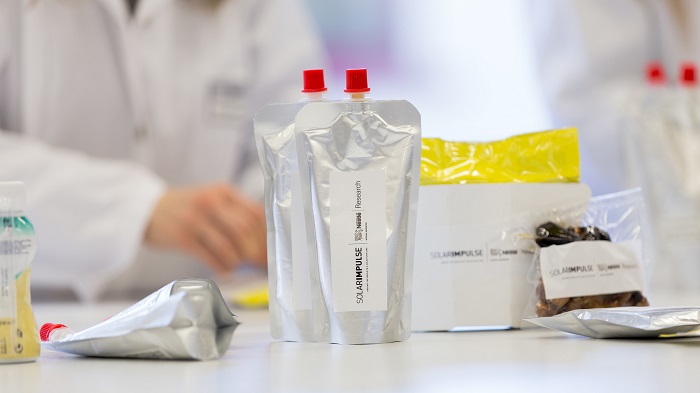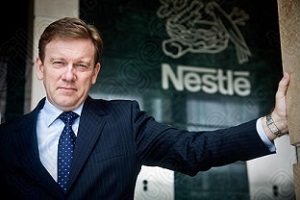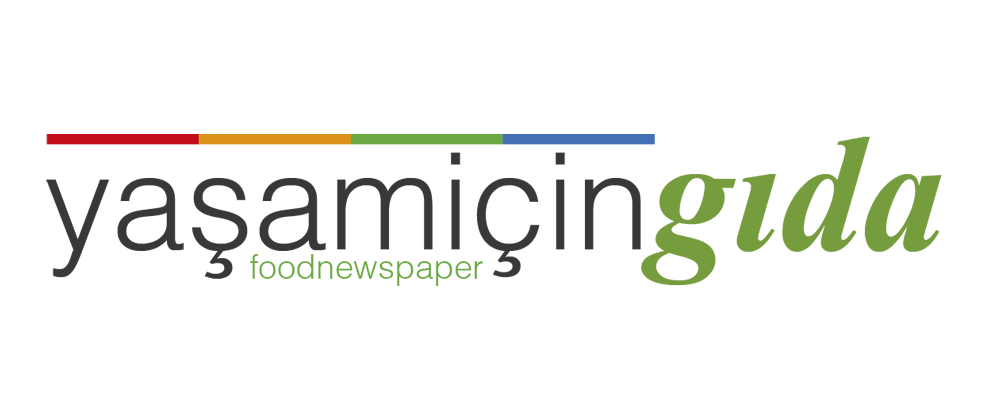Scientists and food experts from Nestlé replenish Solar Impulse pilots during a marathon 65hr uninterrupted flight between Hawaii and California.
Nestlé Research is on board today as Solar Impulse, the world’s first attempt to circumnavigate the globe in a solar powered aircraft began its first U.S. leg from Honolulu to Mountain View. Nestlé Research is working hand in hand with pilots Bertrand Piccard and André Borschberg, to ensure that they have the nutritional fuel they need to sustain themselves throughout their global voyage.
This global mission presents an unprecedented endurance test. Staying healthy and well-nourished is vital to mission success. To help the pilots withstand extreme temperatures, low oxygen and high stress levels while navigating a 1’600 kg sliver of carbon fibre 8’500 m above the earth, a team of eight Nestlé Research experts and scientists has developed healthy and tasty, tailor-made menus as well as innovative packaging solutions.

Nestlé Research has worked closely with the Solar Impulse team for over five years, developing a range of meals and snacks that can withstand extreme variations in temperature and climatic conditions, while meeting the specific nutritional needs of the pilots. As part of the mission, a dedicated nutrition expert will provide ongoing support and will monitor the pilots’ health and collect relevant data for future products. Throughout their journey across the US and the Atlantic Ocean, the pilots will be fueled by meals made and packaged on Nestlé USA’s campus in Solon, OH, where the company invested $50 million in a new research & development facility in 2015.

“We are proud to be part of this historic mission as it continues across U.S.,” said Paul Grimwood, Chairman and CEO of Nestlé USA. “Our partnership with Solar Impulse exemplifies Nestlé’s 150-year history and continued investment in nutrition research and innovation. We take great pride in being able to contribute our knowledge and expertise to keep the Solar Impulse pilots healthy and energized as they continue their journey of discovery around the world.”
The scientific rigor required to produce nutritionally balanced, easy to prepare and consume meals at 8’500 m, and with temperatures fluctuating from -20C° to +35C° is substantial. Specially designed menus take into account the stresses the pilots’ bodies endure and the fluctuation of their nutritional needs at different altitudes. Nestlé experts prepared a high-altitude diet high in carbohydrates and water with higher levels of fat to help the pilots cope with the colder temperatures. When the plane is flying below 3’500 m, the pilots consume larger, higher-protein meals.
Innovative packaging ensures that the pilots’ food stays fresh for up to three months without artificial preservatives. The packaging is also designed to allow the pilots to easily prepare and consume the food, as they are operating in a confined space and at times are wearing oxygen masks.
The data captured during the flight and the learnings from the five years of work with Solar Impulse will provide valuable insights for the development of future products, such as foods that meet targeted needs for specific population groups. For example, designing meals for pilots who have substantial caloric needs as they face restricted movement and limited appetites in-flight has yielded valuable insights that Nestlé Research could apply when designing specific food solutions for elderly populations.
The daily food supply consists of up to 11 meals and includes popular brands such as Nestlé® Pure Life® water, NESCAFÉ®, Nestlé FITNESS® breakfast cereals, NIDO® milk powder, RESOURCE® protein shake, GERBER® yogurt, CAILLER® chocolate and a range of reheatable custom-made meals including mushroom risotto, potato gratin and arroz con pollo (steamed rice with chicken).
“The right food and nutrition are critical to the success of our mission, sustaining us for the long journey around the earth. By working closely with the team at Nestlé Research, we have the confidence that we will have the energy and fulfilment necessary to achieve our goals as we are pushed to our physical limits,” said Bertrand Piccard, Initiator, Chairman and Pilot of Solar Impulse.
A dedicated Nestlé research scientist is following the plane, managing the diet and nutrition of the pilots and ensuring that the correct amounts of food are available. Completion of the flight is expected in the summer and the plane is scheduled to be spanning 35,000 kilometres and some 500 hours of actual flying time.
The clean tech revolution: The zero-fuel airplane
Swiss pioneers Bertrand Piccard (Chairman) and André Borschberg (CEO) are the founders, pilots and driving force behind Solar Impulse, the first aircraft able to fly day and night without a drop of fuel – propelled solely by the sun’s energy. With the Si2 aircraft, they will attempt the first Round-The-World Solar Flight in 2015. Supported by Main Partners Solvay, Omega, Schindler, ABB, and Official Partners Google, Altran, Bayer MaterialScience, Swiss Re Corporate Solutions, Swisscom and Moët Hennessy, this historic first aims at demonstrating that clean technologies can achieve the impossible.
After the original Solar Impulse Si1 prototype which holds 8 world records, Si2 engineers have designed and constructed a new single-seater aircraft made of carbon fiber. It has a 72 meter wingspan (larger than that of the Boeing 747) for a weight of just 2,300 kg, equivalent to that of a car. The 17,248 solar cells built into the wing supply electric motors (17.5 CV each) with renewable energy. The solar cells recharge four lithium batteries totaling 633 kg each, which allow the aircraft to fly at night and therefore have virtually unlimited autonomy.
The Si2 Round-The-World flight will take-off from the Abu Dhabi (UAE), in early March and return by late July 2016. The route includes stops in Muscat, Oman; Ahmedabad and Varanasi, India; Mandalay, Myanmar; and Chongqing and Nanjing, China. After crossing the Pacific Ocean via Hawaii, Si2 will fly across the U.S.A. stopping in Phoenix, the Midwest, and New York City at JFK. After crossing the Atlantic Ocean, the final legs include a stop-over in Southern Europe or North Africa before completing the Round-The-World flight at its final destination in Abu Dhabi.

